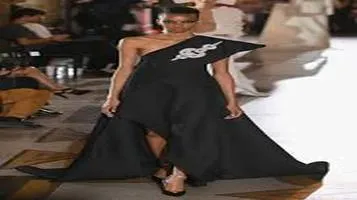A Glimpse into the World of Haute Couture Collections
Haute couture collections represent the pinnacle of fashion artistry and craftsmanship, showcasing exclusive, custom-fitted clothing made by the world's most prestigious fashion houses. These collections are unveiled biannually, typically in Paris, where designers like Chanel, Dior, and Valentino present their exquisite creations. Each piece is meticulously handcrafted, often requiring hundreds of hours of labor, with intricate detailing and the finest materials such as silk, lace, and embroidery. Haute couture is not only a display of luxury and creativity but also a testament to the skill and dedication of the artisans and designers involved. These collections set the trends for the fashion world, influencing ready-to-wear lines and reflecting the cultural and artistic zeitgeist of the moment.

Haute couture, the epitome of high fashion, is where art meets fashion in the most exquisite manner. It represents more than just clothing; it is a celebration of craftsmanship, creativity, and exclusivity. Each season, the world’s most prestigious fashion houses unveil their haute couture collections, offering a glimpse into the future of fashion while paying homage to its rich history. Having had the privilege to witness these collections, I am captivated by their grandeur and the meticulous attention to detail that goes into creating each piece.
To begin with, haute couture collections are the zenith of sartorial excellence. Unlike ready-to-wear lines, haute couture is custom-fitted to the client’s measurements, ensuring a perfect fit. This bespoke nature is a cornerstone of haute couture and is evident in the tailoring and construction of each garment. The level of precision in the cutting, stitching, and finishing is unparalleled. For instance, Chanel’s recent collection showcased tailored suits with intricate embroidery and beadwork, demonstrating the brand’s commitment to preserving traditional craftsmanship while infusing modern elements.
The creative vision behind haute couture collections is another aspect that sets them apart. Designers often draw inspiration from a myriad of sources, including art, history, nature, and architecture. This season, Dior’s collection was a homage to the Renaissance, with Maria Grazia Chiuri reimagining classical silhouettes with contemporary flair. The use of luxurious fabrics such as silk, tulle, and velvet, combined with elaborate embellishments, created an ethereal and timeless aesthetic. The narrative woven through each collection is a testament to the designer’s ability to tell a story through fashion, making each piece a work of art.
Moreover, the exclusivity of haute couture adds to its allure. Haute couture houses, such as Givenchy, Valentino, and Maison Margiela, produce limited quantities of each design, which are often one-of-a-kind. This rarity makes haute couture highly coveted among fashion connoisseurs and collectors. The exclusivity is further enhanced by the fact that only a select group of clients can afford these pieces, given their exorbitant price tags. However, for those who can, owning a piece of haute couture is akin to possessing a rare jewel, a symbol of status, and a testament to their appreciation for the finest things in life.
The craftsmanship involved in creating haute couture is nothing short of extraordinary. Each garment can take hundreds, if not thousands, of hours to complete. The ateliers, or workshops, where these pieces are made, are staffed by master artisans who have honed their skills over decades. Techniques such as hand embroidery, lace making, and pleating are meticulously executed to bring the designer’s vision to life. For example, the House of Schiaparelli’s recent collection featured dresses adorned with surrealist motifs, achieved through painstaking handwork. The dedication and passion of these artisans are palpable in every stitch, making haute couture a celebration of human ingenuity and creativity.
Furthermore, haute couture serves as a laboratory for innovation in fashion. Designers often experiment with new materials, techniques, and silhouettes in their haute couture collections, which can eventually trickle down to ready-to-wear lines. This season, Iris van Herpen’s collection was a masterclass in innovation, with the designer exploring the intersection of fashion and technology. Her use of 3D printing and sustainable materials pushed the boundaries of what is possible in fashion, offering a glimpse into the future of haute couture. This spirit of experimentation ensures that haute couture remains at the cutting edge of fashion, constantly evolving and setting new standards.
However, haute couture is not without its criticisms. The industry has been scrutinized for its lack of diversity and inclusivity, both in terms of representation on the runway and accessibility to a broader audience. While there have been efforts to address these issues, there is still a long way to go. Additionally, the environmental impact of producing such opulent garments has come under the spotlight, prompting some designers to explore sustainable practices. As the fashion industry as a whole grapples with these challenges, haute couture must also adapt to ensure its relevance in a changing world.
In conclusion, haute couture collections are a testament to the artistry, creativity, and craftsmanship that define high fashion. They offer a rarefied glimpse into a world where clothing transcends functionality to become a form of artistic expression. From the bespoke tailoring to the innovative designs, haute couture is a celebration of the finest aspects of fashion. While it faces criticisms and challenges, its ability to inspire and captivate remains undiminished. For those who can experience it, haute couture is not just about wearing a garment; it is about being part of a legacy that celebrates the pinnacle of human creativity and ingenuity.






